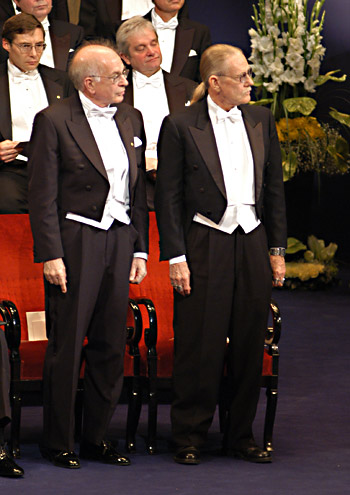Making The Most of Book Swapping
One of the things I enjoy most about books is sharing them.

I love that moment when a family member, friend or colleague hands me a book and says “I thought you would find this book interesting”.
So it was last week when a great friend of mine handed me Thinking Fast and Slow, by Daniel Kahneman. (I should warn you, I am not the 50 Shades of Grey type, although I did read the Game Of Thrones series this summer.)
I knew nothing about Dr. Kahneman so I did some research. After pursuing a university education in psychology and mathematics, he has studied, written about and lectured on behavioral psychology, behavioral economics, and more recently hedonic psychology (the study of happiness, its nature and its causes) for five decades. You can read about him here.
As I tend to do, I dove right into the book. And what a great read it is proving to be. My friend was right!
Dr. Kahneman explores the foundations of our decision making capabilities as people, and the way these capabilities can be led astray. He describes our “system 1” thought process which is fast; intuitive, associative, metaphorical, automatic, impressionistic, and “always on”; and our “system 2” thought process, which is slow, deliberate, effortful, resource intensive, and working away to keep us on the right track when deeper thinking is required.
He won his Nobel prize in economics for his work in behavioral science (prospect theory). He is recognized as a leading global thinker of today. But what struck me most in reading his book was his human-ness and his passion for his topic: his interest in people, our foibles, and how to better understand “how we tick”.

Through a rich set of examples and experimental results he shows us how these two systems operate and describes the interplay between them. He also reviews the research that has been conducted over the past couple of decades including sharing some of the provocative conclusions that have resulted from this research – mostly confirmring how susceptible we all are to influences and biases in our decision making.
You can read much better reviews by Galen Strawson of The Guardian, who describes it as “an outstanding book, distinguished by beauty and clarity of detail, precision of presentation and gentleness of manner”; or by Jim Holt of The New York Times, who describes it as “an astonishly rich book: lucid, profound, full of intellectual surprises and self-help value, consistently entertaining and frequently touching.”
If you’re still doubtful, check out the CIA’s review by Frank Babetski (seriously). Those of you who recall the “known known, known unknown and unknown, unknown” comments of Donald Rumsfeld, will even see here a link between the academic research of Kahneman and the field work of the intelligence community.
Thinking Fast and Slow About Your “Human Resources”
Dr. Kahneman’s research, experiments and conclusions seem particularly important to me for people who spend their careers and lives engaged in the process of hiring, developing and evaluating other people for a living.
Thinking Fast and Slow is a comprehensive survey book. It provides a foundational understanding and an outstanding summary of the current state of research into the psychology of decision making. Readers can take its examples and immediately apply them to their own personal and work life experiences.
I think its many examples will be particularly useful for HR professionals, recruiters, consultants, managers and others who spend their time dealing principally with the hopes, aspirations, needs, biases, fears and concerns of the people working with them or reporting to them in the workplace. There are also likely some excellent tips and tricks here for those interested in understanding and navigating their way around the thought processes and decision-making of those they report to!
If your concerns are around employee morale, workplace happiness and engagement, performance reviews, compensation systems and the like, Thinking Fast and Slow is definitely worth a read. I hope you find it rewarding. As Strawson notes, the book illustrates that “we’re all astonishingly susceptible to being influenced – puppeted – by features of our surroundings in ways we don’t suspect”.
There is bound to be a lot of insight HR professionals can take from this. As an example in an HR context, we can see fundamental biases at work in the process of allocating “performance bonuses”, a subject near and dear to the hearts of everyone these days – especially with the increasingly warm debate over income distribution between the wealthy and everyone else. :
“…There is a tremendously powerful illusion that sustains managers in their belief their results, when good, are the result of skill; Kahneman explains how the illusion works… The fact remains that “performance bonuses” are awarded for luck, not skill. They might as well be handed out on the roll of a die: they’re completely unjustified”…
Nothing goes closer to the heart in an organizational context than discussions around differential compensation… So there is a lot there to sink your teeth into as you focus on engaging, working with and motivating employees.

The “science of organizational design” — if it can be called that – is still new and brewing. But there is little doubt that this will become a much more fertile area of study as the organizations we work in continue to evolve and develop and play an increasingly important role in our lives. See for example the commentary of Dr. Naomi Stanford on neuroscience and organizational design.
And as one of many fertile areas for research, it would be terrific to determine how to apply these insights to virtual organizations – to see if his conclusions and insights can be as helpful for people who work remotely as I think they are for people who routinely work closely together.
At Organimi we believe the future of work for a large portion of our work force is by definition increasingly going to be based on collaboration among virtual participants. So understanding the ways we make decisions and exercise judgement in this context, and the potential influences on them, will be important.
If you want to see how to use org charts as a tool for collaboration and communication in your workplace, physical or virtual, check out our cloud based org charts and start modeling the place you work. You can try it here or watch the video here.
Speaking of Getting and Staying Happy: The Terry Fox Run
As I mentioned above, more recently Kahneman has spent his time in the study of “hedonic psychology” defined as “the study of what makes experiences and life pleasant or unpleasant. It is concerned with feelings of pleasure and pain, of interest and boredom, of joy and sorrow, and of satisfaction and dissatisfaction. It is also concerned with the whole range of circumstances, from the biological to the societal, that occasion suffering and enjoyment.”
It is really interesting – and I found quite encouraging and affirming – to learn how much we can impact on and influence this, and how much of a difference the small things we do, think and say can help create a happier work space.
One of the basic and affirming points made in Kahneman’s work is the surprisingly significant role smiling and maintaining a positive outlook will have on your overall health and well being.

So it was with this comment in mind my wife and I set out for our annual participation in The Terry Fox Run in our neighborhood this past weekend.
This event, for those unfamiliar with it, is completed nationwide in Canada every year. It honours Terry Fox a young Canadian who died of cancer while in the midst of a cross-country run – one one leg, with the other already having been amputated – to raise awareness about the disease and funding for cancer research.
Terry’s ambitions were to raise $24 million – a dollar from every Canadian at the time. Two decades later, the annual run continues to be operated nation wide by volunteers and the fund raising proceeds by now, almost three decades later, total over half a billion dollars for cancer research.
But mostly it is about family and friends getting out, taking time out of their days and lives, to commemorate that act, with smiles all around.
There is a hugely positive aspect to the Terry Fox Run, shared everywhere across Canada, like so many other charitable events, locally or nationally around the world, and it is easy to see Dr. Kahneman’s research into happiness – its causes and effects – being demonstrated here, in simple acts of giving and contributing.
Great books. Great causes. Great big smiles all around. Who could ask for anything more.
